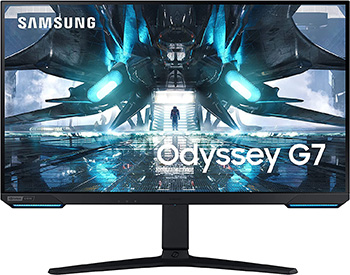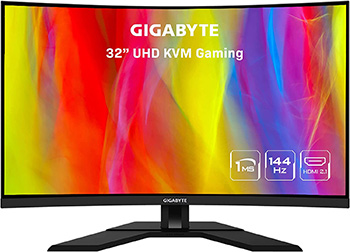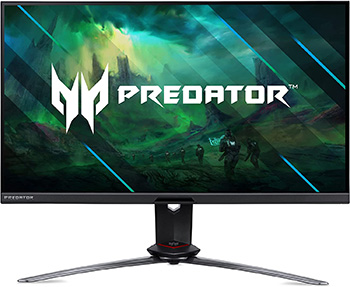The best gaming setup is only as good as the weakest link in the chain, so if you invest in a great gaming PC or console you also need a great gaming monitor to deliver the best possible picture. In this article, you will find our recommendations for the best 4K gaming monitors.
Remember that you need to choose something that is compatible with your gaming machine in terms of the type of graphics card that it uses. Do your due diligence on your required specs before you start shopping so you don’t end up with something that isn’t compatible with the rest of your setup.
Product Comparison
Best 4K Gaming Monitors Reviewed

LG is known for its quality 4K TVs, and they bring a lot of that quality to this 28-inch monitor using picture-true IPS panels.
A standard widescreen, this monitor gives you a lot of swivel and tilt leeway, and it will stay stable with its included VESA stand. There are no built-in speakers, so these need to be bought separately.
It is principally designed to work with G-Sync but is also Free-Sync compatible; however, you have to connect with HDMI 2.0, rather than 2.1, which feels like a compromise. Once you are connected there is no denying the quality delivered by a 144Hz refresh rate with a 1ms response time.
If your main concern is picture quality while you are gaming, you will be very happy with what this LG 4K monitor delivers.

If you want a high-quality screen from a trusted brand, this Samsung option might appeal, delivering full 4K at 28-inches.
- 28-inch ultra-wide, flat-screen with IPS panels
- 144Hz, 1ms response time, HDR400
- G-Sync and Free-Sync
The first thing worth noting about this option is that it is an ultrawide 21:9 screen, which won’t work with all of your programs, but if you want to get fully immersed this is often the way to go. You will get a great IPS panel picture with a 144Hz refresh rate and a 1ms response time, but be aware you need some calibration out of the box and there is no HDMI 2.1.
It is principally designed to work with Nvidia G-Sync but is also compatible with AMD Free-Sync, so should work with whatever you are using. The screen is fully adjustable–you can even turn it portrait–and it’s stable on its VESA mount.
If you are looking for a top-quality 4K monitor that delivers an ultrawide screen, this Samsung model is the best on the market.

The Gigabyte M-series is top of the range when it comes to the current options in gaming monitors, with the standard 144Hz screen refresh ideal for 4K but delivering up to 160Hz.
- 32-inch wide, curved screen with VA panels
- 144-160Hz, 1ms response time, HDR400
- G-Sync and Free-Sync
This 32-inch option comes with a curved widescreen that uses VA panels to deliver the best of both worlds when it comes to responsiveness and true color. It uses HDMI 2.1 and HDR4000 to ensure a 1ms response time.
The monitor is compatible with both G-Sync and Free-Sync, which means it should work with whatever graphics card you have, but it doesn’t use Dolby Vision. While it still delivers a great picture, this is something many buyers look for. The stand included is also cheap, but you can buy a better VESA stand to deal with that problem.
Those looking for a higher-end, but not overly expensive, 4K monitor will appreciate this option. Plus, it is the only curved monitor on our list.

If you are keen on HDMI 2.1 but you need something that is Free-Sync compatible, take a look at this 4K monitor from Acer.
- 28-inch wide, flat-screen with IPS panels
- 144Hz and 1ms response time
- Free-Sync
This is very similar to the next option. It is a 28-inch flat-screen with a 144Hz refresh rate, 1ms response rate, and HDMI 2.1 connection. The main difference is that it is compatible with AMD Free-Sync, so check what you need and choose between the two, which are both at a similar price point at the higher end of the range.
This one comes with a top-quality VESA stand that needs to be bought separately with some monitors.
For AMD users looking for a future-proof 4K monitor, this Acer option is one of the best on the market.

If future-proofing your purchase with HDMI 2.1 is important to you, then this Asus monitor is top of the line and sure to remain relevant for years to come.
- 27-inch wide, flat-screen with IPS panels
- 144Hz, 1ms response time, HDR400
- G-Sync
The 27-inch widescreen uses IPS panels and has a 144Hz refresh rate and 1ms response rate thanks to its HDMI 2.1 connection that offers a DSC link. Do bear in mind that while the screen is excellent, it has a relatively thick bezel, which not everyone likes.
Also, make sure that this screen is compatible with your device, as it is only designed to work with G-Sync, which means you have to have an Nvidia graphics processor. This would be a pricey mistake to make since this is one of the more expensive options on this list.
If you don’t mind spending a bit extra for something that is top quality and is sure to remain relevant for a number of years, this Asus is a good investment.
Buying Guide
Minimum Spec Requirements
If the monitor that you are looking at doesn’t meet the specs below, you probably shouldn’t consider it.
- Minimum 144 Hz refresh rate – can get up to 360 Hz but 144Hz is the minimum required to deliver 4K
- Maximum 3 millisecond response time – most 4K monitors will promise 1ms
- G-Sync (with Nvidia graphics card) or FreeSync (with AMD graphics card) – many options are compatible with both.
- HDR400, which differs from the HDR10 that is mainly used for streaming.
- HDMI 2.0 or 2.1, preferably the latter. Why?
If you want the fastest possible connection between your PC and your monitor, you need to be using HDMI 2.1, which sends data faster and lets higher-quality graphics pass through.
HDMI 2.1 is actually quite a big step forward from 2.0. It decreases reliance on display screen compression and boosts variable refresh rates so that there is no stuttering or lags.
Once you have these specs covered, you need to make a few decisions.
Screen Size
Exactly how big do you want your 4K monitor to be? Bear in mind that you tend to sit relatively close to your monitor, so it will be a lot smaller than your 4K TV. Most gamers tend to go for something between 27-32 inches, but there are smaller and larger options.
Remember that the larger the screen the better graphics card and processor you need in your PC to produce a decent picture, so make sure there is alignment between your PC and monitor hardware capabilities.
Also consider aspect ratios. While most PCs will support 16:9 widescreen, they don’t all support 21:9 ultra widescreen.
You can also choose a curved screen, with the curve measured in R. The lower the number the greater the curve. The most common curvatures are 1800r, 3000r, and 4000r.
Panel Type
You will need to decide whether you want a monitor with TN, VA, or IPS panels.
TN panels are the most common and the most affordable. They offer fast response times and good refresh rates, but you don’t get the same image color accuracy as you can expect from IPS panels.
IPS panels tend to be noticeably more expensive, but in exchange for your dollars, you get a sharper image with truer colors. The response times can also be a bit slower, though this may only be noticeable with the fastest-paced and most dynamic games.
VA panels sit somewhere between TN and IPS panels, with better refresh rates than IPS panels and better color reproduction than TN panels; however, VN panels aren’t more popular as a “middle ground” because they tend to result in slower response times.
Looking for a gaming controller? Find our recommendations for the best Bluetooth gaming controllers here.
FAQs
What size monitor is best for 4K gaming?
You will probably want a screen at least 27 inches wide, but no more than 32 inches wide. If your screen is too big, you need too much processing power in your PC to deliver the required picture.
Can you run 4K on 144Hz?
Yes, 144Hz is the minimum that you need to deliver 4K, which is why it is the standard spec for 4K monitors. Higher Hz levels do exist, but these monitors tend to be significantly more expensive.
Do you need a 4K graphics card to use a 4K monitor?
Yes! Your monitor is only capable of delivering what your PC or gaming console can deliver. Your setup is always only as good as the weakest link in the chain.
Want to game with your Android TV box?
The Verdict
To establish a decent gaming setup, all the elements need to be aligned. Your monitor and your gaming machine need to be compatible, and your monitor needs to be capable of delivering the smooth and high-quality images demanded of many games.
There are lots of great 4K monitors on the market, so have your list of minimum and compatible specs and tick them off to find the right option for you.
Our top recommendation for smooth picture quality is the LG Ultragear, while if you are into ultrawide look at the Samsung Odyssey. For a curved screen head for the Gigabyte M32UC. If you want to futureproof with HDMI 2.1, choose the Acer Predator for AMD processors and the Asus ROG Strix for Nvidia processors.





I appreciate how you break down complex subjects and make them easy to understand.